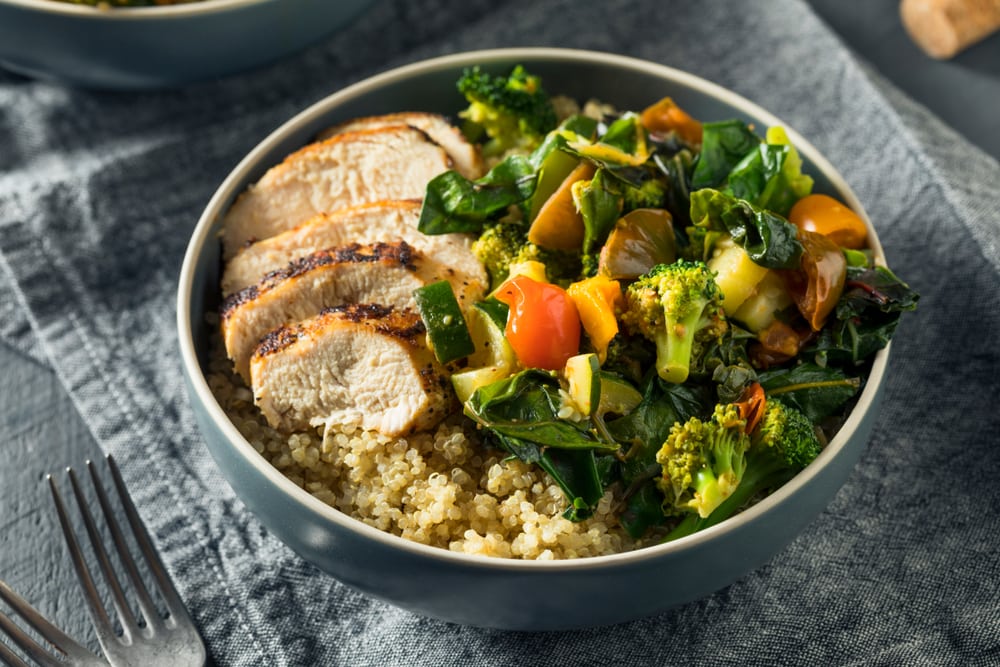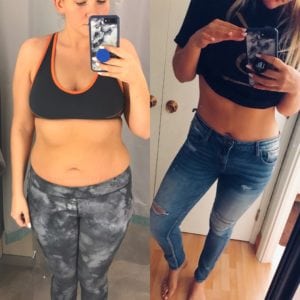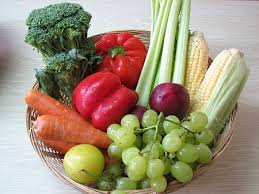
09 Oct How To Get Started With Eating Healthy
With summer over, now is the perfect time to get refocused and get started with eating healthy!
First, what does it mean to eat healthy? To us at Faster Fitness, it means establishing a few healthy habits:
- Eating the right amount of calories for your goal
- Eating the right KIND of calories for your goal
- Consuming food healthy sources
Eating The Right Amount Of Calories For Your Goal
Generally speaking, when you’re eating healthy, your goal should be to maintain your body fat levels. When your goal shifts to losing body fat or gaining muscle for a period of time, you can increase or decrease the amount of food that you’re eating to get you to the ideal caloric range.
While we’re a big fan of MyFitnessPal, we don’t suggest that people start using it on day 1 with specific calorie goals. Thats’s more of a level 2 nutrition strategy for us.
By simply eating the following, most people should be in a good caloric range on most days:
Ladies
- Breakfast: Protein shake, greens powder for veggies, 1 handful of nuts
- Lunch: A palm size of lean protein, 2 fists of veggies and 1 handful of healthy carbs – Ex: A salad with chicken, balsamic dressing and berries and walnuts
- Snack: A protein bar
- Dinner: A palm size of lean protein, 2 fists of veggies and 1 handful of healthy carbs – Ex: Turkey tacos, brown rice and some cheese on a bed of spinach lettuce
Fellas
- Breakfast: A double protein shake, greens powder for veggies, 1 handful of nuts
- Lunch: A palm and a half size of lean protein, 2 fists of veggies and 1 and a half handfuls of healthy carbs – Ex: A salad with chicken, balsamic dressing and berries and walnuts
- Snack: A protein bar
- Dinner: A palm and a half size of lean protein, 2 fists of veggies and 1 and a half handfuls of healthy carbs – Ex: Turkey tacos, brown rice and some cheese on a bed of spinach lettuce
Note: The portions above can be moved around if it doesn’t fit your lifestyle.
Eating The Right KIND Of Calories For Your Goal
If you look closely, the meal plans listed above will conveniently get you to a caloric goal that suits most people with a little flexibility with eating out a couple times a week. But it also provides the proper amounts of macronutrients, or types of calories for your goal.
Here’s a quick summary of macronutrients:
- Protein: Builds muscle, provides essential amino acids for mental and physical health, and it makes you feel full. There are 4 calories per gram of Protein.
- Carbohydrates: Provides energy, important for performance and long term health. Fiber is considered a carb and is essential for heart health, fat loss, digestion and much more. There are 4 calories per gram of carbs.
- Fat: Provides energy, essential for vitamin absorption and many bodily functions. At 9 calories per gram, it’s very calorie dense so portions should be monitored.
The Goal Of Fat Loss – How To Change The Plan: We usually start with tips such as removing the carbs at lunch and dinner and switching to fat free balsamic dressing at lunch and see how you respond. Make sure you’re consistent 7 days a week eating similar to this and limiting alcohol. By dropping calories to this level it should easily lead to fat loss. This low level of calories should not be maintained forever.
The Goal Of Gaining Muscle – How To Change The Plan: We would usually start by adding a 5th meal of a protein shake with bananas or berries for healthy carbs and some nut butter. Depending on your body composition, we may need to add more to start. If you’re consistent, you should add muscle without gaining much, if any, body fat.
Consuming Healthy Food Sources
When we say lean protein, we’re not talking about Johnsonville bratwurst 😂. We’re talking about chicken, turkey, fish, egg whites, protein bars and shakes.
For carbs, drinking orange juice will have a drastically different effect on your body than eating oatmeal because of the hormonal effect of the type of macros that you’re eating (sugar vs complex carbs). Healthy examples include oats, berries and other low glycemic fruits, brown rice, quinoa, etc.
With fat, some saturated fat is cool, but generally speaking, you’re aiming for monounsturated fats from nuts, avocados, olive oil, and other healthy fats. Omega 3’s are star players that contain DHA and EPA which helps brain function and reducing inflammation amongst the hundreds of benefits. Since most people don’t eat salmon daily, fish oil supplements are usually recommended eventually.
Coaching Tip: When you’re starting out, DON’T worry about eating organic, non-gmo or all natural.
If there’s two choices in front of you and one says all natural, anti-biotic free, sure, go for it. But don’t complicate it at first. Down the road favoring higher quality ingredients will naturally help the flavor of your food and your health. When you get to the stage to make this more of a priority, avoid antibiotics in meats and go organic for the Dirty Dozen foods, but going 100% organic probably isn’t ever needed.
If you follow this plan at least 5 out of 7 days a week, you’ll probably be able to get results like Shannon, who lost over 5% body fat with us this year!

Bonus Tips:
Eating every 3-4 hours helps stabilize your blood sugar and prevents cravings and binge eating. It also helps maintain your muscle mass better than intermittent fasting.
Getting all of the vitamins and minerals you need for optimal levels is virtually impossible, so we recommend a high potency multi vitamin after you’ve adapted these habits.
Meal prepping once or twice a week will save you time and money while making it convenient to hit your nutrition goals everyday.
Training
The type of workouts you’re doing is equally important to being lean and athletic.
Just doing cardio will only work for a short period of time. Incorporating the right balance of strength and metabolic conditioning workouts is paramount to looking and feeling your best!
If you want a world class training program, more nutrition support, or a custom calorie and macro plans to overcome any plateau, then consider our Group Personal Training program by clicking the link below!


